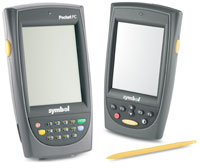Beloit Memorial Hospital Improves Management of Bedside Medication with Bar Coding
 Challenge
Challenge
Beloit Memorial Hospital, a 175-bed community hospital in Beloit, Wisconsin decided to make patient safety a strategic priority after recent reports indicated that medical errors were increasing costs nationwide. The Institute of Medicine concluded that medical errors were a serious problem in the industry, and a study from the Joint Commission on the Accreditation of Healthcare Organizations (JCAHO) found that each incident involving an adverse drug event (ADE) costs hospitals an average of $2,000. About 40 percent of errors in prescribing medication are caught by the pharmacist or nurse before reaching the patient, but the hospital had no such “second check” for bedside administration of medication.
Solution
Beloit Memorial wanted to see if introducing technology tools at the point of care would reduce the risk for error. One possibility for streamlining the process for prescribing medication was computerized physician order entry (CPOE). But Beloit conducted demonstrations of CPOE products, and determined the technology did not meet the hospital’s needs: it wasn’t easy to use, and in fact added complexity to the process.
After an internal process mapping analysis, Beloit’s management opted instead to introduce bar coding. Using bar coding in the process of administering medication would be more cost-efficient, easier to deploy, and more effective in preventing errors.
Beloit went live with its bar coding program in its Family Care Center in August 2003. Including obstetrics, pediatrics, nursery, and gynecological surgery, the Family Care Center was chosen for the initial rollout because it routinely orders and administers only a narrow range of medications, offering greater control and less opportunity for error.
At the time, only 35 percent of medications entering the hospital’s pharmacy were bar coded at the unit-of-use level. The first step was to get all medications bar coded, so the pharmacy began repackaging those medications that lacked such a bar code. Using a Euclid Cadet Twin repackager, the pharmacy began applying labels printed with the National Drug Code (NDC) bar code symbology. The best multi-purpose print solution for Beloit’s medication management system proved to be on-demand href=”http://www.barcodesinc.com/zebra/”>thermal printers from Zebra Technologies.
Next, Beloit brought together the bar coding program and its wireless system, which was implemented in 2000. Nursing staff began using handheld scanning devices at bedside. Approximately 60 nurses were equipped with lightweight Symbol 8800 handheld computers with integrated bar code readers and a tethered stylus for data entry. This mobile solution allowed the nurse to confirm the patient’s identity by scanning the patient’s bar code wristband, review the list of medications ordered on the handheld computer’s screen, and then scan the medication and her or his own badge to confirm the dosage and scheduling. This process helped the hospital achieve the “five rights” of medication management: giving the right drug to the right patient in the right dosage at the right time through the right route. If any of these five conditions were not met at the point of scan, the handheld computer would display a “second check” warning. If the five rights were all met, the medication would be administered and documented.
Results
As a result of bar coding, medication administration errors declined in the Family Care Center by 67 percent in eight months, and soon after, the hospital rolled out its bedside bar coding solution in the special care unit (oncology). “Within one year we realized a 74 percent decrease in reported medication errors in the Family Care Center, and we documented an 89 percent decrease in errors within six months in the special care unit,” said Doris Mulder, vice president of nursing at Beloit Memorial. Today Beloit is using bar coding in all its inpatient units for bedside administration of medication, and Mulder noted that she has seen a decrease in reported errors in every unit.




